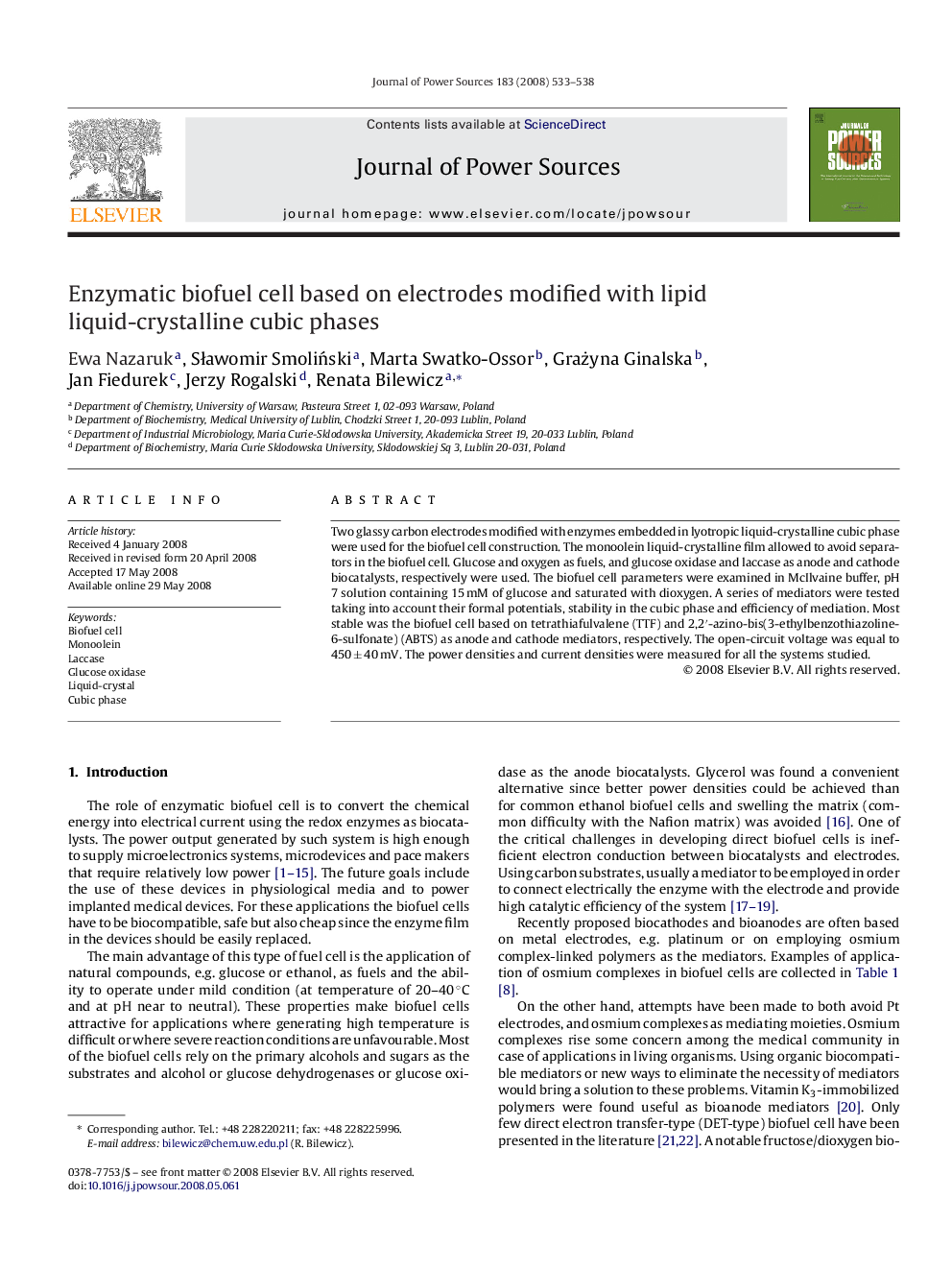| Article ID | Journal | Published Year | Pages | File Type |
|---|---|---|---|---|
| 1290401 | Journal of Power Sources | 2008 | 6 Pages |
Two glassy carbon electrodes modified with enzymes embedded in lyotropic liquid-crystalline cubic phase were used for the biofuel cell construction. The monoolein liquid-crystalline film allowed to avoid separators in the biofuel cell. Glucose and oxygen as fuels, and glucose oxidase and laccase as anode and cathode biocatalysts, respectively were used. The biofuel cell parameters were examined in McIlvaine buffer, pH 7 solution containing 15 mM of glucose and saturated with dioxygen. A series of mediators were tested taking into account their formal potentials, stability in the cubic phase and efficiency of mediation. Most stable was the biofuel cell based on tetrathiafulvalene (TTF) and 2,2′-azino-bis(3-ethylbenzothiazoline-6-sulfonate) (ABTS) as anode and cathode mediators, respectively. The open-circuit voltage was equal to 450 ± 40 mV. The power densities and current densities were measured for all the systems studied.
